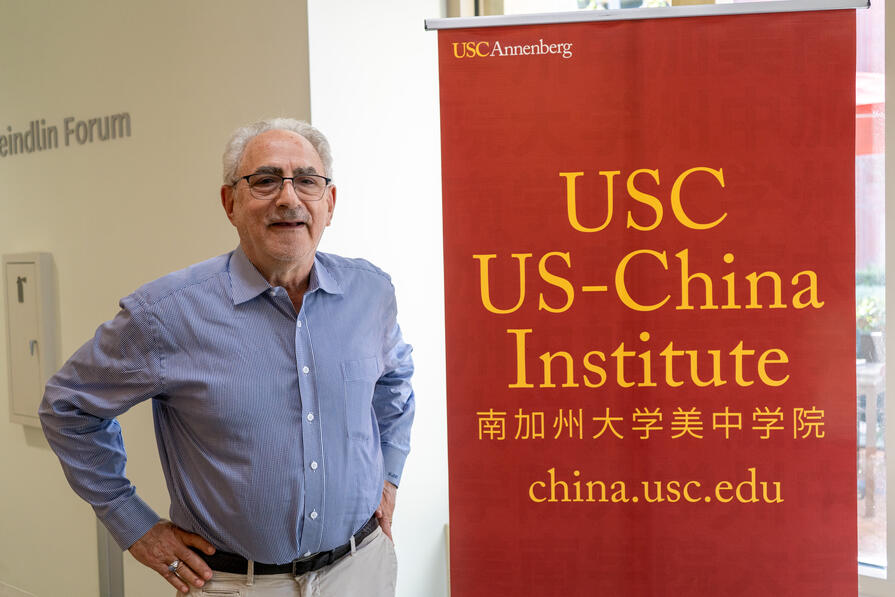Happy Earth Day! 祝你世界地球日快乐!
Select USCI resources relating to environmental issues in China:
air pollution & climate change | water & soil pollution | waste & recycling | global reach | conservation | urbanization | issues aren't new | government documents
As the images above of Los Angeles and Shanghai (from 2020 and 2021) demonstrate, much more is needed to reduce the damage we’re doing to the air we breathe, let alone our contributions to global climate change. The American Lung Association just released its State of the Air report. Based on the number of days of “unhealthy” days (using the U.S. Environmental Protection Agency air quality index standards), it found 31 of California’s 58 counties deserved a grade of F on their air quality report cards. Los Angeles and three California Central Valley cities (Bakersfield, Visalia and Fresno) topped the national list for the worst ozone pollution. Those three Central Valley cities were also at the top of the national list for the worst particle pollution. Pollution levels were higher than they were in 2017-2019.
Shanghai has improved its small particle pollution numbers since 2016. A recent study in China Quarterly argues that, while Shanghai’s pollution is less visible and may be perceived as less of a problem, it remains unhealthy. Of course, many of China’s interior cities have much worse air pollution than Shanghai.
Air pollution in both countries yields premature deaths. A study in Nature Geoscience found that in China between 2002 and 2017, small particle (PM 2.5)-related deaths rose 23%. That study credited regulations with slowing the increase in deaths, but argues that China’s economic shift from manufacturing in the direction of services and rising automobile use means that regulating power plants and factories is not enough.
Automobiles are more efficient than a generation ago, but there are just a lot more of them in both countries. In Los Angeles County, public transit ridership was less than half in 2020-2021 compared to 2014-2015. The pandemic drove much of the drop, but it had already fallen 20% PRIOR to the pandemic. Analysts blame a number of factors, including concerns about safety and competition from ride-share services. At the same time gentrification in transit-friendly areas priced many transit-riders out of the area. Efforts to rededicate road space to buses, bikes and pedestrians has met with fierce opposition in many places, with some residents launching drives to recall officials.
As the center of American car culture, we’ve struggled with emissions for a long time. To illustrate this we have a 1947 photo from a USC vs Smog campaign. E.A. Swenson (seated) and Herman Roth test a smog suit. In 1954, members of Highland Park Optimist Club wore gas masks to protest the tenth day of “eye smarting smog.”
 |  |
Over the past two decades, we’ve also seen pollution-related protests in China. Here, citizens mobilized in 2019 in Wuhan to oppose construction of a waste incineration plant.

As some of the materials below suggest, there has been progress in some areas. We remain too dependent on fossil fuels. China's energy needs have grown rapidly. Beginning in 2011, China's coal consumption exceeded the rest of the world combined. Even our solutions (e.g., electric vehicle batteries) pose significant sustainability challenges.
We hope you'll join us in celebrating our shared planet and that we can all commit ourselves to treating it much better. We're in this together.
Air pollution and climate change
Is China going green?
 April 22, 2021
April 22, 2021Scholars Genia Kostka and Angel Hsu look at China's environmental protection efforts and the use of data in making and implementing Chinese environmental laws. (YouTube)
COVID-19 is changing the environment
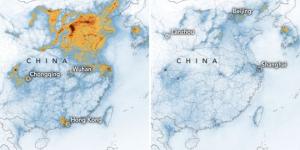 March 26, 2020
March 26, 2020A drop in travel and shuttered businesses has resulted in noticeably cleaner air: China's CO2 emissions are down 25% and satellite images show drops in pollution worldwide.
Could China save the planet?
 May 14, 2019
May 14, 2019Longtime Natural Resources Defense Council leader Barbara Finamore examines China's environmental challenges and a new global system of green finance. (lecture | interview | YouTube)
Measuring to monitor and to mobilize
 April 24, 2018
April 24, 2018Blue Skies over Beijing: economic growth and the environment
 September 9, 2016
September 9, 2016
Economist Matthew Kahn looks at the everyday choices made by the China's citizens, families, and government. He and his coauthor examine how urbanites increasingly demand cleaner living conditions. Where is China headed? (interview | YouTube)
Water
Running out of water
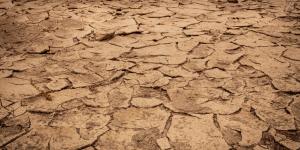 April 22, 2021
April 22, 2021Freshwater supplies have been shrinking worldwide. How are the U.S. and China coping?
Water and Food - Lucy Hornby and Simon Shao at our "Finding Solutions" conference
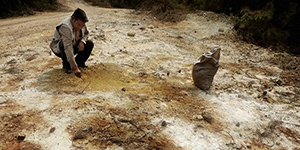 April 24, 2018
April 24, 2018Journalist Lucy Hornby discusses why water and soil pollution are persistent problems and deepening public concerns (YouTube). Biologist and farmer Simon Shao discusses efforts to address China's food needs (YouTube).
Waste
Buried in plastic?
 April 15, 2021
April 15, 2021The plastics industry is global and the task of cleaning it up should be global too.
Recycling in Beijing
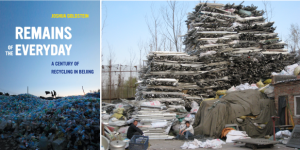 January 21, 2021
January 21, 2021
Historian Joshua Goldstein discusses the role recycling and recyclers have played in China's economy and its new sustainability challenges. (YouTube) "Waste not, want not" (2016 report) China's wastelands: How the world's trash ends up in China (2013 USCI | YouTube)
Environmental concerns along the Belt and Road
The environmental impact of BRI projects
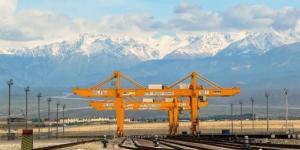 April 12, 2021
April 12, 2021
Political scientist Jessica Liao looks at "green merchantilism" in BRI infrastructure projects, exploring what China refers to as "green foreign aid," "green financial systems," and "green trade and investment." (YouTube)
Preservation efforts
Documenting China's wild places and conservation efforts
 June 18, 2021
June 18, 2021Conservation photographer and writer Kyle Obermann discusses his work documenting the evolution of China’s nature reserves, national parks, and grassroots environmental groups. (YouTube)
Pandas as China's modern icon
 August 26, 2021
August 26, 2021Historian Elena Songster's new book links the emergence of the giant panda as a national symbol in China to the development of nature protection in the country. (YouTube)
Panda power
 August 26, 2021
August 26, 2021For a creature whose numbers are small and whose natural habitat is tiny, those lovable pandas have played key global roles in conservation, science and even diplomacy.
Pangolins and a pandemic -China's wildlife trade
 August 18, 2021
August 18, 2021This US-China Today article offers a look at China's lucrative wildlife trafficking industry and how the pandemic is driving demand.
Simba on saving Africa's lions
 April 24, 2018
April 24, 2018
Simba (星巴, originally Zhuo Qiang 卓强) is the first Chinese national engaged in full-time wildlife conservation in Africa. He talks about his life and work among lions in Kenya (YouTube).
Expanding cities
Urbanization in China and the U.S.
 October 19, 2021
October 19, 2021
China's urbanization has raised living standards and astonished observers.
Urbanization's benefits and its costs
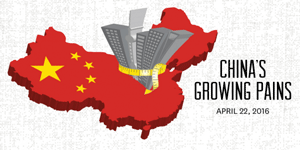 May 17, 2016
May 17, 2016
Speaking at our "China's Growing Pains" conference, scholars Jonathan Woetzel (USCI | YouTube) and Tao Ran (USCI | YouTube) presented contrasting views of what China's rapid urban growth has meant and its sustainability.
Issues of long-standing
When a billion people jump
 November 11, 2010
November 11, 2010
Journalist Jonathan Watts criss-crossed China to report on "an environment in crisis." He tells of this crisis by through vivid stories of individuals, including those with power and many without. (YouTube)
The global impact of China's environmental crisis and resource hunt
 May 12, 2009
May 12, 2009
Researcher Elizabeth Economy looks at the range of environmental challenges in China, governmental and non-governmental responses, and the potential for multilateral cooperation to address problems. (YouTube)
Air quality at the 2008 Beijing Olympics
 August 21, 2008
August 21, 2008
Comparing this summer's air in Beijing with that in Los Angeles (2028 games), New York, and London (2012 games).
Breathing in Beijing: pollution and the Olympics
November 9, 2007
In a US-China Today story, Laura Dilley talks with scientists, athletes and coaches about the challenges pollution imposes on competitors.
Government Documents
Visit our collection of reports, declared intentions, and speeches from Chinese and U.S. government agencies. For example: "Strategy for Cooperation," "Comparison of Green Energy Programs," and "Seafood: Safety and Trade Issues."


